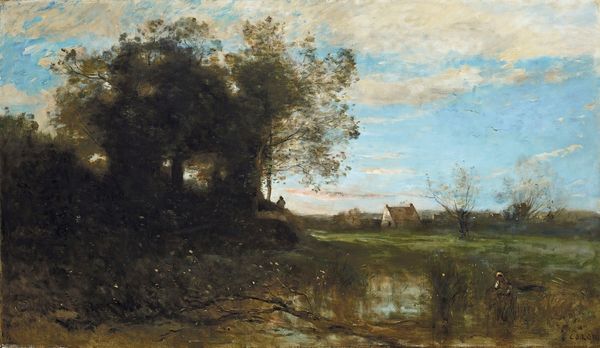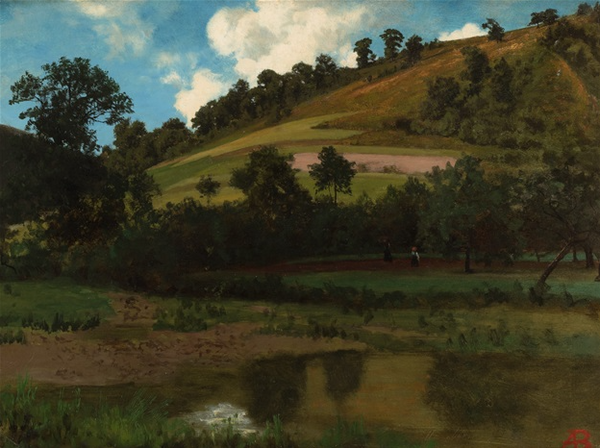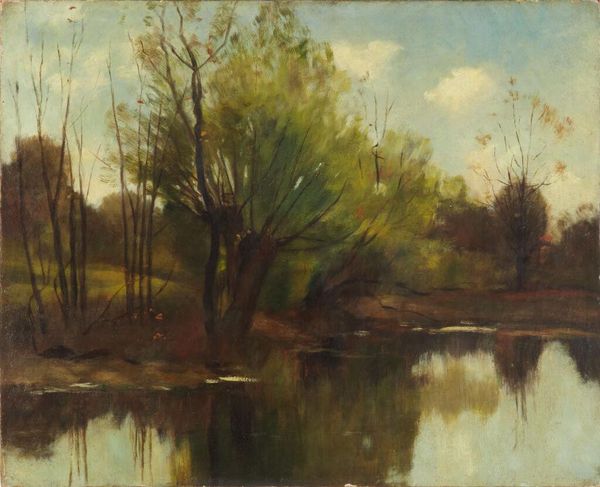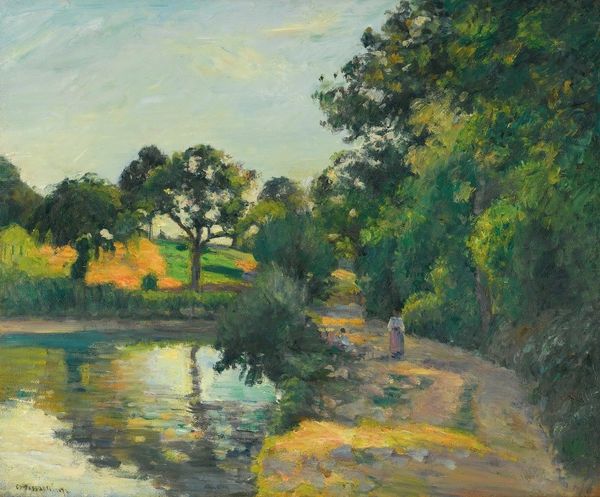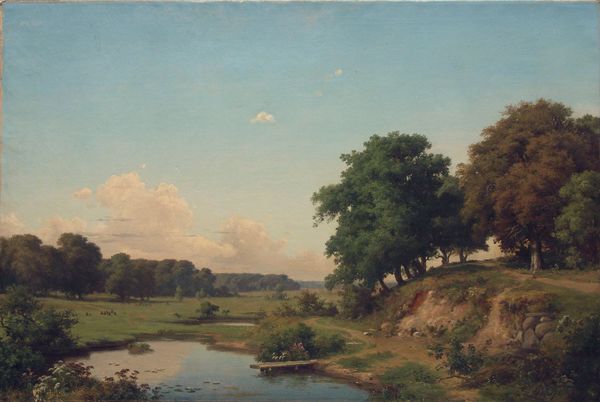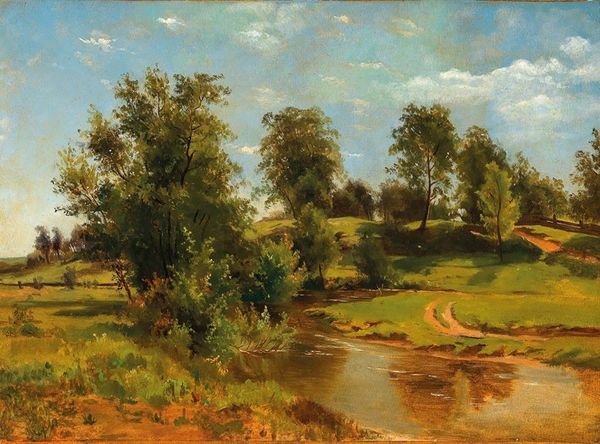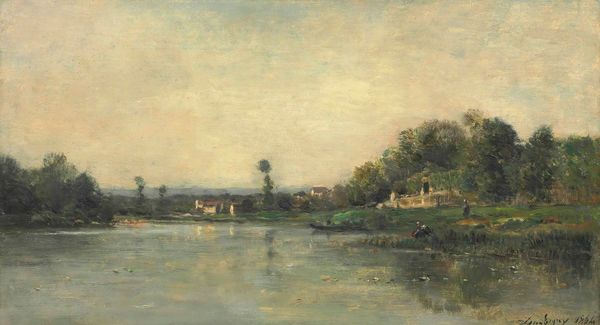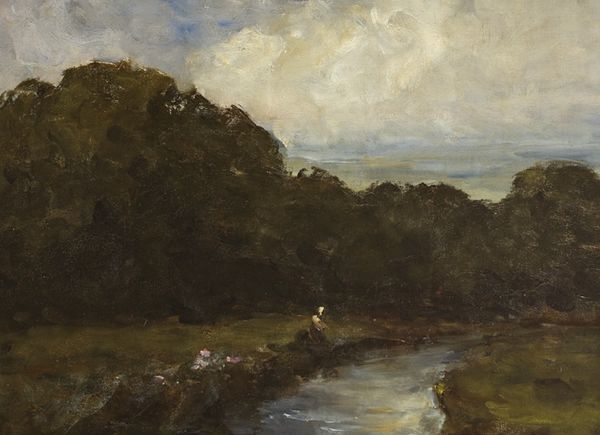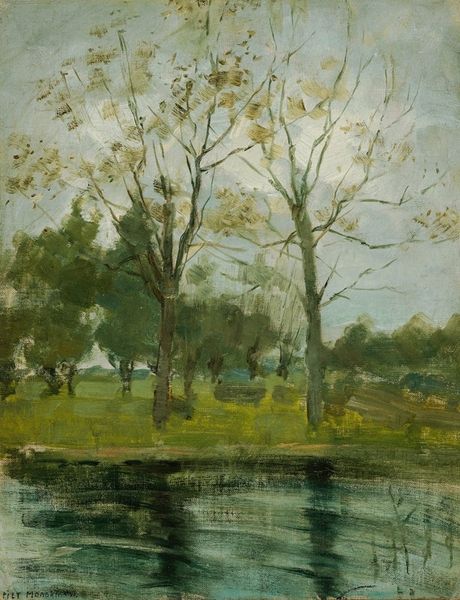
painting, plein-air, oil-paint
#
painting
#
plein-air
#
oil-paint
#
landscape
#
oil painting
#
realism
Copyright: Public Domain: Artvee
Curator: This is Gustave Courbet's "Château Au Bord De La Rivière," painted in 1856. A beautiful oil-on-canvas landscape done en plein air, as we can clearly appreciate, but how does this strike you initially? Editor: My first thought is how muted and reflective it feels. The water mirrors the sky so perfectly it creates this sense of somberness and calm. Curator: Interesting that you perceive it that way. I look at this, and I am drawn into the quiet domesticity, almost bourgeois comfort, presented by the chateau settled upon the hill. It’s like a peaceful aspiration. Editor: But it’s a highly selective vision of peace, wouldn't you say? Consider Courbet’s social position and what rural life truly represented for many in 1856—exhausting labor, political exclusion, stark inequality. The scene's tranquility could easily veil more complicated social realities. Curator: Undoubtedly. Courbet was skilled at conveying a distinct viewpoint, one influenced by the social theories gaining momentum. Consider the Realist movement— his emphasis on presenting life as it exists is not without careful choice and symbolism. The painting depicts not necessarily what *is* universally, but how Courbet *chooses* to see. Editor: Yes, and the strategic positioning of the chateau isn’t neutral. It stands elevated, perhaps symbolizing power and distance from the common sphere represented by the fields. Even the brushstrokes seem different here. More polished. The Chateau reflects a type of controlled brushwork not seen in the landscape beneath. Curator: Precisely! He masterfully differentiates social spaces using even his technique. A great way to frame our understanding of mid-19th century France through symbolic rendering. The symbolic load of the sky and its reflection over water as images of clarity. I believe our time is nearly over, any last impressions? Editor: For me, it speaks to how art both reflects and obscures socio-political truths, and the chateau’s quiet power prompts an examination of what gets foregrounded—and what is quietly erased—within a single landscape. Curator: Very profound indeed; I will consider it myself. I will continue seeing this image as an icon representing an intimate ideal, a moment of domesticity preserved, and also a mirror reflecting the societal structures of its time.
Comments
No comments
Be the first to comment and join the conversation on the ultimate creative platform.

